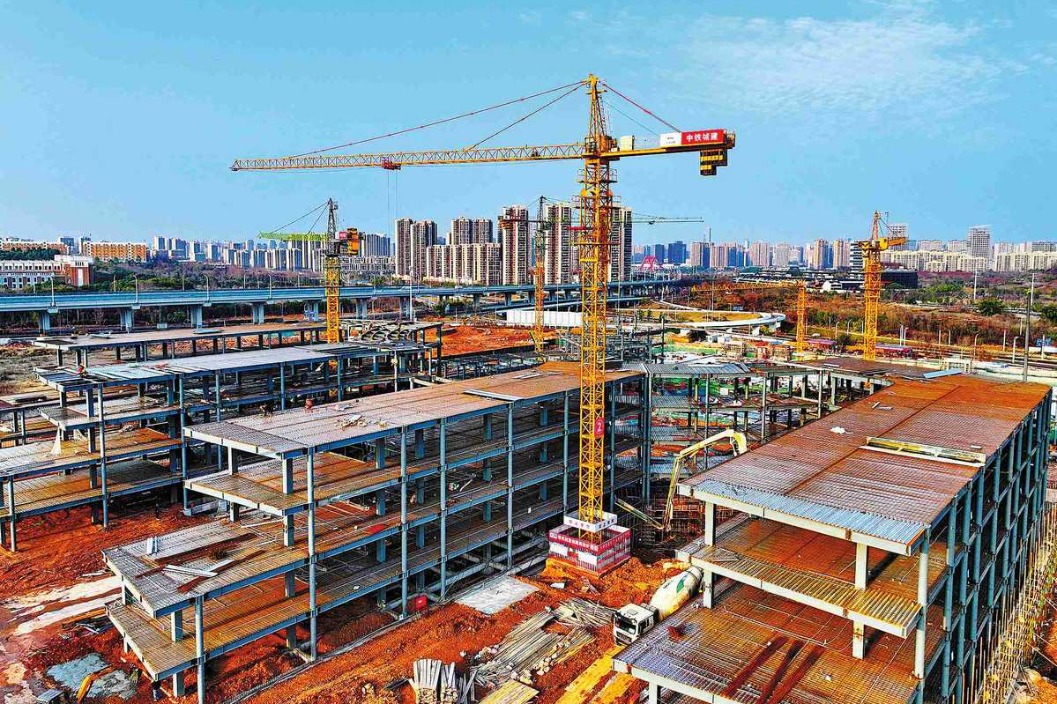Strong fundamentals to drive mainland stock markets higher


A lot of voices were warning of another rout in the A-share market when it broke the previous low on Aug 5 and then bridged a gap left over from Feb 25 the very next session.
The market rebounded for several days and sentiment recovered until earlier this week.
A hot debate is underway whether the market is near the bottom or if the bearish sentiment will linger. Those who are long on the market are in the minority.
Why? The reason is simple really. Once bitten, twice shy.
Individual investors recall the overwhelming pessimism in 2015 and last year. But there is also another old saying that goes something like this: even the longest night will end.
One piece of logic is pellucidly clear: the authorities are banking on the capital market to fuel and further drive the real economy. That economy is embodied in the backbone industrial sectors, such as manufacturing, commerce and consumption, information technology, biotechnology, entertainment and services among others.
More than 3,000 of China's best companies are listed in the market. In an ideal situation, they are expected to provide fresh blood and be role models to keep the economy growing; if their half-year financial statements really speak for themselves.
There are other major reasons for an optimistic market stance.
From the global perspective, worldwide quantitative easing may be on the horizon, led by the recent interest rate cuts by the US Federal Reserve and some other central banks. If the US central bank is raising the curtain for another round of QE, it will be an effective way to avoid a hard landing in the 10-year-old bull market in the United States.
Domestically, the de facto lending rate of China's interbank market has also been liberalized and decreasing at a steady and comfortable pace for the sake of the real economy and corporate financing.
China's central bank also started a key interest rate market-oriented reform on Tuesday, which is expected to boost corporate earnings by reducing lending costs and lowering the risk-free interest rate, both of which would be supportive to stock prices.
The reform would liberalize the formation mechanism of the loan prime rate-the price of loans banks offer to their best clients-and use the LPR as the lending reference rate, gradually replacing the one-year benchmark lending rate.
China will also continue to implement a prudent monetary policy in the second half of this year to maintain reasonably ample liquidity, according to a key meeting of the Political Bureau of the Communist Party of China Central Committee.
Under a global easing environment and "reasonably ample "liquidity at home, it is hard to imagine another crash in the A-share market.
On another front, where has the all liquidity gone?
In the past when the year-on-year growth of M2, or the broad money supply, was above 9 percent, the majority of the funds flew into the white-hot property market.
The size of China's real estate market has surpassed 300 trillion yuan ($42.5 trillion), about four times the country's annual GDP. In 2018, the US housing market was valued at $33.3 trillion, about 1.6 times GDP, according to estimates from real estate and rental marketplace Zillow.
Some well-paid foreigners working in China were stunned by rocketing housing prices in the country, saying it was irrational for a price-versus-annual earnings ratio to reach 50 times to buy an ordinary apartment in Beijing. For developed markets, the ratio is less than 20 times.
Without a doubt, the "capital pool" in the real estate market cannot hold more liquidity at this time. When it comes to the capital markets, we cannot ignore another important topic: credit levels.
The aggregate leverage ratio of the real economy, including corporate, governmental and household debts, is around 250 percent, the official data showed. It is not at a dangerous level, but it is not comfortable either since most of them are bank loans which lack efficiency, flexibility and are vulnerable if a crisis hits.
The property sector relies heavily on indirect bank financing, which has led to the high leverage levels. Direct financing is a much better option. The equity market is ideal for that reason. Data from the China Securities Regulatory Commission showed that direct financing accounted for 17.9 percent of China's total balance of financing as of last year, much lower than the more than 80 percent in the US.
Given the need to contain financial risks associated with high leverage and to support the real economy more effectively, China's leaders and regulators have paid what analysts called "unprecedented attention" to pushing ahead the development of equity markets and direct financing since late 2018.
President Xi Jinping announced in November that China would launch a brand-new sci-tech innovation board, or the STAR Market, and pilot the registration-based initial public offering system. Several months after the announcement, the STAR Market began trading in Shanghai as a pioneer of capital market reforms.
Another clear signal from the leadership is that the China Central Television's flagship daily news show Xinwen Lianbo has covered the A-share market several times this year, which was rare in its history. The latest coverage was on Aug 8 where CSRC Vice-Chairman Li Chao said the A-share market's capacity to withstand external risks is increasing, citing the market's low valuation and reduced leverage risks, along with relatively stable investor sentiment despite trade frictions with the US.
The Political Bureau of the CPC Central Committee reiterated the importance of capital markets in its latest tone-setting meeting held in late July, saying the STAR Market should properly implement its registration-based IPO system with information disclosure at its core and improve the quality of listed firms.
Measures to deregulate the main board of the A-share market were stepped up, with an easing in regulations over margin trading starting on Monday being the latest move.
What is now in place to propel the market is an accommodative monetary environment, the limited capacity for the real estate market to absorb residents' savings, and the governments' strong commitment to capital market reforms.
The growing appetite of foreign investors for A-share assets may further fuel a potential market advance.
The A-share market is now valued at more than 50 trillion yuan, smaller than the country's annual GDP. In contrast, the size of the US stock market hit $32.75 trillion in July, about 1.6 times its annual GDP.
At the close of trading on the upcoming Tuesday, global index provider MSCI Inc will further increase the weighting of A shares in its indexes used by worldwide money managers. This would be followed by its competitor FTSE Russell's weighting increase of A shares that is due in September.
Both will be followed by S&P Dow Jones Indices, which is scheduled to include A shares in its investment benchmarks next month.
Propelled by all of those inclusions, more than $600 billion in foreign capital may flow into the A-share market over the next five to 10 years, said HSBC.
The benchmark Shanghai Composite Index closed up by 0.11 percent at 2883.44 points on Thursday, and the ChiNext index, which tracks startups and innovative firms, went up by 0.23 percent to settle at 1613.46 points.
Nobody has a crystal ball to know what will exactly happen tomorrow, especially in a market in which individual investors dominate.
But please remember: Extremes meet, and the longest night will eventually come to an end.
Zhou Lanxu contributed to this story.




































